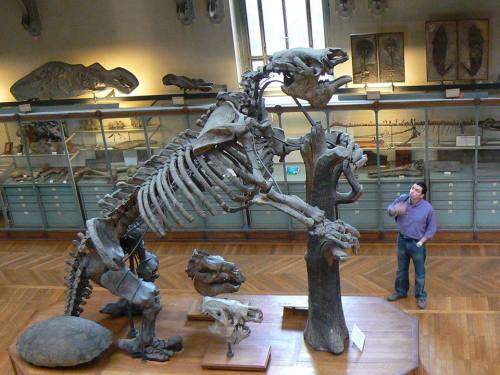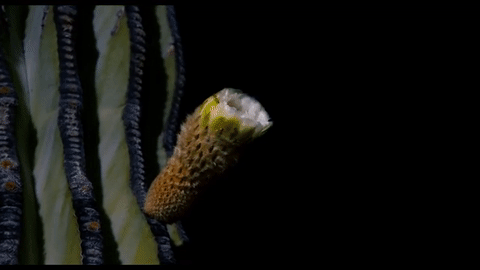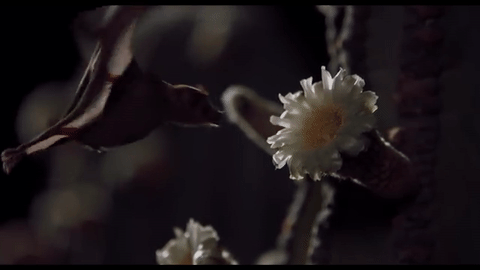Episode 46 Of The In Defense Of Plants Podcast Has Arrived!








Episode 46 of the In Defense of Plants Podcast has arrived!
This week its all about the flora of the Ozarks!
The Ozark Mountains have long been a mystery to me. This ancient mountain range is home to a bewildering diversity of plant life, some of which is found nowhere else in the world. From glades to woodlands and everything in between, the Ozarks have it all. Join me for a discussion with Justin Thomas, director of the Institute of Botanical Training. Justin and his wife have devoted their lives to studying and protecting the plants of this region. I learned a lot from talking with Justin and I know you will too.
Photos by Justin Thomas
More Posts from Llamaslikesciencetoo and Others

Behemoths of the ancient past…and future?
One thing that many known prehistoric creatures have in common - and the thing that most people find fearsome - is that a lot of them were huge. Everyone knows about the gigantism of T-rex, Diplodocus, and Megalodon. But there were also ground sloths the size of modern-day elephants, dragonflies the size of hawks, and cockroaches the size of domestic cats (!)
Keep reading

7 types of fog you didn’t know had names
Fog comes in several distinct varieties that are influenced by nearby bodies of water, landscape features and other local factors. Here are some of the most impressive forms of it on the planet.


Palau vs. the Poachers
The isolated nation of Palau, in the South Pacific, comprises 250 small islands that take up only 177 square miles combined. But international law extends its authority to 200 miles from its coast, giving it control over 230,000 square miles of ocean. For a relatively poor country with no military and a tiny marine police division, and waters teeming with poachers, it’s a tall order. But, as The New York Times reporter Ian Urbina writes, Palau has mounted an aggressive response: it has banned bottom trawling and shark fishing, employed the latest in surveillance technology, and provided a model for collaboration among countries, companies and NGOs.
Reportage photographer visited Palau on assignment for The Times to show the marine police’s efforts and the natural resources they are trying to protect.
Read the article in this week’s issue of The New York Times Magazine.

“Indeed, despite programs designed to interest girls in STEM, GoldieBlox, and supermodels celebrating the virtues of coding, the fields are still overwhelmingly male and seem virtually resistant to change. Jahren, a geochemist and geobiologist, argues that the problem is hardly one of enthusiasm, but rather widespread sexual harassment in the fields that, unsurprisingly, goes unpunished.
The kind of sexual harassment Jahren describes is hardly that of a Mad Men episode: groping and outright dickishness are easier to label and condemn as sexual harassment (and it’s worth noting that STEM has a problem with that too).
Rather, it’s the kind that prioritizes men’s feelings, and their expression of them, over the simple act of treating a woman as a professional colleague. Jahren persuasively argues that the persistence of this kind of behavior—the constant demand from both male colleagues and academic advisors that their feelings be acknowledged and legitimized—is one of the reasons women leave STEM fields.
An email forwarded to Jahren by a former student asking her advice typifies the problem:
[The student] forwarded an email she had received from a senior colleague that opened, “Can I share something deeply personal with you?” Within the email, he detonates what he described as a “truth bomb”: “All I know is that from the first day I talked to you, there hadn’t been a single day or hour when you weren’t on my mind.” He tells her she is “incredibly attractive” and “adorably dorky.” He reminds her, in detail, of how he has helped her professionally: “I couldn’t believe the things I was compelled to do for you.” He describes being near her as “exhilarating and frustrating at the same time” and himself as “utterly unable to get a grip” as a result. He closes by assuring her, “That’s just the way things are and you’re gonna have to deal with me until one of us leaves.”
It’s hard to imagine that the sender of the email thought that it would earn him the romantic admiration of his female colleague, coupled as it is with a vague threat likely meant to convey the authentic intensity of his attraction. And yet, as Jahren writes, this behavior has “been encountered by every single woman I know.”
Read the full piece here





Date Idea: binge watch all the Free Willy movies
SeaWorld Can Extend Tilikum's Legacy Beyond the Show Pool
Monday, March 14, 2016
http://voiceoftheorcas.blogspot.com/2016/03/seaworld-can-extend-tilikums-legacy.html
To Whom It May Concern:
Myself, and the other members of VOTO, Samantha Berg, John Jett, and Carol Ray, have been informed that Tilikum, a SeaWorld killer whale in Orlando, is near death. We are saddened by this announcement, although it is not unexpected.
Tilikum has developed an antibiotic resistant bacterial infection of the lungs, with pneumonia being the leading reported cause of captive killer whale mortality. Efforts to treat Tilikum have failed due to decades of antibiotic and antifungal therapy, medications that three-of-us at VOTO have fed him, and medications he was on in 2010 when he killed Dawn Brancheau, as reported by
APHIS, here
Tilikum has been getting fed antibiotics consistently for at least two decades, primarily because of his badly damaged teeth, including open bore holes that must be flushed with antiseptic solution 2-3 times daily. These bore holes can lead to fish particles, roe, and other debris getting into the jaw and eventually into his blood stream, causing chronic low grade infection(s), and able to seed various organs, including the lungs. The end result is that, now, Tilikum is filled with bacteria that are resistant to powerful and broad spectrum medications that SeaWorld is dosing him with.
Tilikum is, at this time, likely suffering from pulmonary edema, or excess fluid in his lungs. When the surface area of his alveoli diminishes sufficiently, he will suffocate in a stretcher, at SeaWorld. In a last ditch effort to obtain air to oxygenate his tissues, he will likely thrash in the stretcher, and go through a period of “death throes,” prior to finally passing. This is a particularly dangerous time for the animal care and training staff on hand.
A crane is reportedly standing by, possibly to recover his body if he should pass. This information is unconfirmed, but it does correspond with SeaWorld’s recent announcements seen in this video:
Many citizens, including some in the scientific community, are hopeful that SeaWorld will dedicate Tilikum’s cadaver to science. This gesture would advance our understanding of the impact of captivity on marine mammals such as Tilikum.
Histological samples of dorsal fin collagen would help us understand collagen fibrillogenesis in killer whales, and why dorsal fins collapse in captivity. Kidney tissue samples could help us understand the effects of chronic dehydration on orcas, like Tilikum, who require gelatin as a dietary supplement. Cardiac tissue could be examined for evidence of physical deconditioning. Eye tissue could be used to understand the effects of looking upward toward trainers, a behavior that is probably contributory to early cataract formation in show animals that must look for hand signals from trainers, on stage. Blood tissue can be used to test for elevated titers of viruses such as West Nile, St Louis encephalitis, and other mosquito transmitted “bugs” associated with zoos, but not seen in wild animals. Immunoglobulin levels could provide information on captive orca immunity. Detailed bone and joint examinations could be examined for evidence of various arthritides. DNA testing could help identify Tilikum’s natal pod, and so on.
Take the NFL as an example
Samples of brain tissue were critical in understanding the newly described condition (seen in NFL players) known as
Chronic Traumatic Encephalopaty (CTE)
and as depicted in the feature film “Concussion,” with Will Smith. The NFL was initially resistant to outside scientists performing these studies, but is now helping to fund them. SeaWorld can mimic the NFL, and CEO Joel Manby can get credit for the change, something that might give him some job security.
Killer whales in captivity are also known to slam their heads on solid objects such as gates and concrete walls, especially adult male killer whales, with Kanduke being a famous example. Tilikum’s brain tissue, or perhaps a new MRI, as depicted in Blackfish, could push our understanding of the orca brain forward, a brain four times larger than our own.
SeaWorld has an opportunity to extend Tilikum’s legacy beyond the performance pool and to substantiate it’s claims of performing relevant science. We are hopeful they will take up this idea for the benefit of science, the public, policy makers, whale lovers, and for future killer whales.
Thank you, Tilikum, for your sacrifices. Your legacy will live on through us and the millions of people your story has touched.
Jeffrey Ventre MD
Blackfish cast member







while people think of the birds and the bees pollinating the flowers and the trees, there are also hundreds of species of nectar feeding bats which pollinate thousands of species of plants. known as chiropterophilous plants, many grow flowers that open at night so that the bats, attracted to the sugary nectar, get a dusting of pollen that is carried along with them to the next flower.
these plants and nectivorous bats have shaped each other through coevolution, with the flowers, usually white in colour and pungent in scent so as to be conspicuous at night, often taking a vase like shape to accommodate the face of the bat. the bats, for their part, have particularly good eyesight and a fine sense of smell, but their sonar is often reduced.
chiropterophilous plants even manufacture substances that are useless to themselves but helpful to the bat; because bats often eat the pollen in addition to the nectar, the pollen of these plants contain an amino acid, proline, which is needed to build strong wing and tail membranes.
also worth noting: compared to say birds and bees, bats have heavy wings for their body size. consider that bats beat their wings up to 17 times per second while the bumblebee can approach 200 wing beats per second. and while those comparatively cumbersome bat wings seem like a detriment to maneuverability, new research shows this extra wing mass makes possible their ability to land upside down, like when roosting. (videography)








Swimming With Whale Sharks - Philippines by Tommy Schultz
You know you grew up on Steve Irwin when you see a photo of a crocodile and think, “Wow. Just beautiful.”
-
 arkxnsan-blog reblogged this · 8 years ago
arkxnsan-blog reblogged this · 8 years ago -
 barnana liked this · 8 years ago
barnana liked this · 8 years ago -
 7thlilylady reblogged this · 8 years ago
7thlilylady reblogged this · 8 years ago -
 mossyelfmylo liked this · 9 years ago
mossyelfmylo liked this · 9 years ago -
 littlebearbutt75-blog liked this · 9 years ago
littlebearbutt75-blog liked this · 9 years ago -
 warsawmouse reblogged this · 9 years ago
warsawmouse reblogged this · 9 years ago -
 warsawmouse liked this · 9 years ago
warsawmouse liked this · 9 years ago -
 blasescience reblogged this · 9 years ago
blasescience reblogged this · 9 years ago -
 llamaslikesciencetoo reblogged this · 9 years ago
llamaslikesciencetoo reblogged this · 9 years ago -
 meavsies-blog liked this · 9 years ago
meavsies-blog liked this · 9 years ago -
 arkxnsan-blog reblogged this · 9 years ago
arkxnsan-blog reblogged this · 9 years ago -
 asktheshowmestate reblogged this · 9 years ago
asktheshowmestate reblogged this · 9 years ago -
 myco-heterotroph liked this · 9 years ago
myco-heterotroph liked this · 9 years ago -
 llamafollower liked this · 9 years ago
llamafollower liked this · 9 years ago -
 lensandpenpress liked this · 9 years ago
lensandpenpress liked this · 9 years ago -
 willowriversong liked this · 9 years ago
willowriversong liked this · 9 years ago -
 palmwaves reblogged this · 9 years ago
palmwaves reblogged this · 9 years ago -
 palmwaves liked this · 9 years ago
palmwaves liked this · 9 years ago -
 lament-of-ajna liked this · 9 years ago
lament-of-ajna liked this · 9 years ago -
 plentyofwater liked this · 9 years ago
plentyofwater liked this · 9 years ago -
 darklordcow liked this · 9 years ago
darklordcow liked this · 9 years ago -
 nw-intp reblogged this · 9 years ago
nw-intp reblogged this · 9 years ago -
 derrick-alger liked this · 9 years ago
derrick-alger liked this · 9 years ago -
 thebeebomb reblogged this · 9 years ago
thebeebomb reblogged this · 9 years ago -
 presidentjovanftw reblogged this · 9 years ago
presidentjovanftw reblogged this · 9 years ago -
 clydegamedev liked this · 9 years ago
clydegamedev liked this · 9 years ago -
 bobzillashiftwoods liked this · 9 years ago
bobzillashiftwoods liked this · 9 years ago -
 alguieenn-blog liked this · 9 years ago
alguieenn-blog liked this · 9 years ago -
 rachellamariedee-blog liked this · 9 years ago
rachellamariedee-blog liked this · 9 years ago -
 cyberbotanist liked this · 9 years ago
cyberbotanist liked this · 9 years ago -
 weepingwonderlandharmony reblogged this · 9 years ago
weepingwonderlandharmony reblogged this · 9 years ago -
 2wo-knav3s liked this · 9 years ago
2wo-knav3s liked this · 9 years ago -
 epimeliad liked this · 9 years ago
epimeliad liked this · 9 years ago -
 bobo040-blog liked this · 9 years ago
bobo040-blog liked this · 9 years ago -
 camellia-quince liked this · 9 years ago
camellia-quince liked this · 9 years ago -
 pandaguilar liked this · 9 years ago
pandaguilar liked this · 9 years ago -
 fuzzedelic liked this · 9 years ago
fuzzedelic liked this · 9 years ago
Mainly interested in ecology, but also the entirety of science.
179 posts